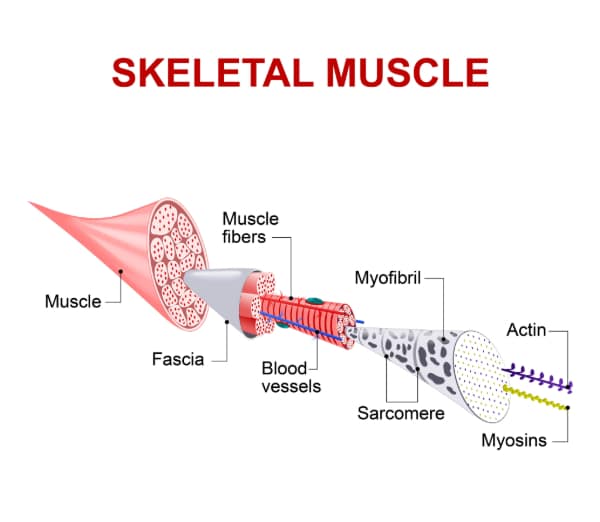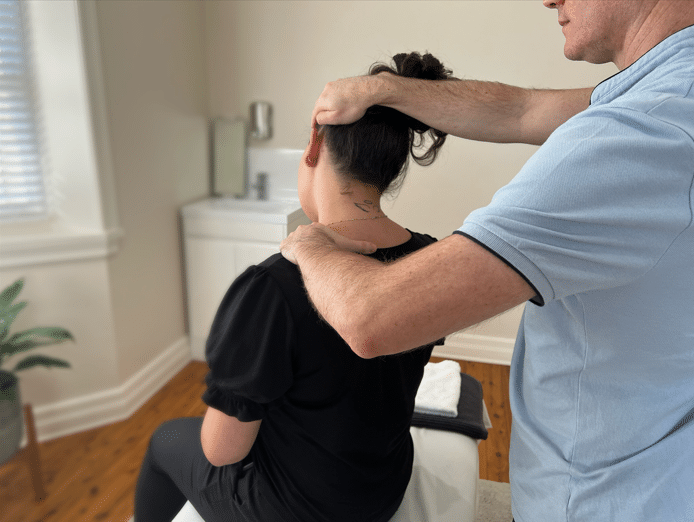- 02 9712 1736
- [email protected]
- 212 Great North Road, Five Dock, NSW 2046
- Open 7 days a week
It doesn’t take long to realise that the human body is a marvel of interwoven structures and systems, each playing a vital role in maintaining your health and function. When you look at the body’s different structures, some appear more important and some less important. One often overlooked yet crucial component of your body is the fascia. Despite its importance, the fascia is often not discussed or understood as well as other parts of the human body. In this article, we will explore the fascia, why it is often overlooked, how it works, its impact on movement and why having a healthy fascia contributes to your overall health and well-being.

The fascia is a dense network of connective tissue surrounding and supporting your muscles, bones, blood vessels, and organs. It consists of two main layers: the superficial fascia, which lies just beneath the skin, and the deep fascia, which surrounds muscles and other structures. Looking at the anatomy of your fascia, you will see that it is composed primarily of collagen, a strong and flexible protein that gives it, its characteristic strength and elasticity.
Breaking down the fascia even more, the deeper layer can be divided into your visceral fascia, which surrounds your internal organs, such as your heart, lung, or liver, and your parietal fascia, which lines your body cavities.
Importantly, your fascia is a physically and neurologically important structure in your body. It is your body’s richest sensory organ, relaying information to your brain about both pleasure and pain.
Despite its important role in the body, the fascia is often overlooked in mainstream discussions about anatomy and physiology. The fascia, for a long time, was also only seen as a connective tissue that lies over muscles and organs, and its importance was not understood, therefore discussion into the fascia was minimal. This has lead to the functions of fascia not being as well understood as those of other structure that make up the human body.

The fascia works as a three-dimensional network to provide support and structure to the body. As mentioned earlier, it surrounds and penetrates all your muscles, bones, nerves, and blood vessels, creating a continuous web that connects everything together. The importance of this network is to allow for:-
Because, the fascia provides support to the body and is a rich source of sensory information it affects various systems in your body. The biggest aspects of the body the fascia affects are your skin, muscles, and the nervous system. It plays a crucial role in proprioception, your body’s ability to sense its position in space and peripheral motor coordination. That is how you move your arms and legs in a coordinated way. Which is essential for coordinated stable movement. Additionally, the fascia is involved in regulating blood flow and lymphatic drainage, helping to maintain your overall health and well-being.

Several musculoskeletal dysfunctions and conditions are related to the fascia. Common conditions include myofascial pain syndrome and fibromyalgia. These conditions are characterized by chronic pain and stiffness in the muscles and fascia, often resulting from trauma, poor posture, or repetitive movements. However, with more research, we are learning that the effects on the fascia are not limited to chronic conditions. It is now known that lower back pain, headaches and post-surgery, your fascia can and are affected. Understanding the role of fascia in these conditions is crucial for you to receive effective treatment and management.

There are several ways to release and treat the fascia. On a daily basis the best approach to maintain a healthy fascia is to perform gentle movements. Simply stretching your body will have a positive effect on your fascia. Likewise, classes such as yoga and Pilates can be beneficial in improving your fascia health. If you need a more targeted approach or have pain, manual therapy techniques such as massage, osteopathy and chiropractic care provide fascia treatment options. Massage therapy aims to release tension in the fascia and muscles, improving blood flow and promoting relaxation. Osteopathy and chiropractic care focus on movement by improving the function of your spine and joints, which can help relieve pressure on the fascia and improve nerve and blood function.
The fascia is crucial for your movement as it provides sensory information to your brain about where you are in space. The fascia also provides support and structure to your muscles and bones. Furthermore, the fascia also helps transmit the forces generated by muscle contractions, allowing you to have smooth and coordinated movement. Maintaining the health and mobility of the fascia is essential for optimal movement and preventing injuries.
In addition to its role in movement, the fascia is essential for overall health. It helps maintain the body’s structural integrity, supports organ function, and regulates blood flow and lymphatic drainage. A healthy fascial system is vital for optimal health and well-being. When the fascia becomes tight or inflamed, it causes pain and discomfort, reducing movement. Reduced movement has a range of adverse health effects.
Your fascia is a complex and often overlooked component of the human body, yet it plays a crucial role in maintaining health and function. Understanding the fascia’s structure and function can help us appreciate its importance and recognise its role in various musculoskeletal conditions. By improving our understanding of fascia, we can better support our body’s natural healing processes and enhance our overall health and well-being.

Forest Lodge, Annandale, Glebe, Leichhardt, Balmain, Haberfield, Canada Bay, Rozelle, Rodd Point, Wareemba, Stanmore, Petersham, Lilyfield, Hunters Hill, Enfield, Cabarita, Mortlake, Rhodes, Burwood Heights, Birchgrove, Gladesville, Huntleys Point, Abbotsford, Ashfield, Croydon Park, Croydon, Chiswick, Russell Lea, Burwood, Strathfield, Concord, Drummoyne, North Strathfield, Liberty Grove, Dulwich Hill, Lewisham, Camperdown, Ashbury, Homebush, Homebush West, Woolwich, Henley, Summer Hill, Sydney Olympic Park
212 Great North Road, Five Dock, NSW 2046
Onsite parking available
Phone: 02 9712 1736
Email: [email protected]

About
Five Dock Osteopathic & Chiropractic is located in Canada Bay, in Sydney’s Inner West. Servicing suburbs including Burwood, Croydon, Drummoyne, Five Dock, Haberfield, Concord, Abbotsford, Chiswick, Leichhardt, Wareemba, Russell Lea, Summer Hill, Strathfield.
Clinic hours
Monday, Tuesday, Thursday 7AM – 7PM
Wednesday, Friday 7AM – 6PM
Saturday 7AM – 2PM
Sunday 8AM – 2PM
Contact details